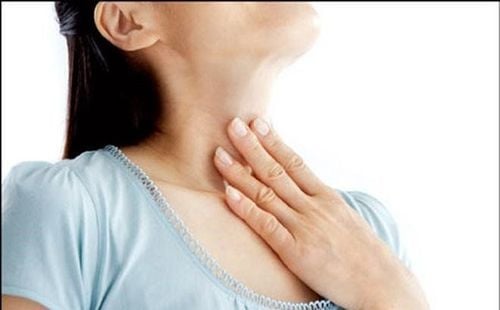This is an automatically translated article.
What is a nutritious meal is a question many people ask when building a nutritious menu for their family. According to experts, a nutritious meal includes many groups of substances such as protein, carbohydrates, fats, vitamins and minerals.
1. Myths about nutrition
Many housewives think that a meal with a lot of protein such as meat, fish, eggs, shrimp, crab, eggs, ... is a nutritious meal. This is a misconception - an eating habit can lead to obesity.
Others believe that only foods of animal origin provide enough protein. Plant foods are not. However, this is also an incorrect notion. In fact, both plants and animals are good sources of protein. However, the advantage of animal food is that it has all 8 essential amino acids. Meanwhile, vegetable protein lacks essential amino acids and has an unbalanced ratio. Therefore, nutritionists recommend that each person should consume both plant and animal proteins to complement each other.
2. What kind of meal is enough?
According to nutritionists, each person has their own nutritional needs depending on body physiology. Nutritional needs also vary with age, sex, physical activity level, and health status. Each person needs to maintain a nutritious and balanced diet to ensure adequate supply of energy and necessary nutrients for the development of the body, to maintain life and to perform well in many school activities. exercise, work,...
2.1 Proportion of groups of substances in meals Nutrition is also an important factor determining health and longevity. Meals that are considered nutritionally balanced and palatable must have reasonable nutrients. That is: The serving of starch accounted for 65 - 70%, protein accounted for 12 - 14%, fat accounted for 18 - 20%. In addition, it is also necessary to add minerals, vitamins and water to the body (from vegetables and fruits). At the same time, it is necessary to ensure a balance of animal and plant food sources. Animal protein should make up 35 - 40% of the food consumed; Vegetable fats make up 40-50% of total fat intake.
Each person also needs to build for themselves a reasonable diet, suitable for taste and available food sources. It is recommended to allocate energy for meals during the day as follows: Breakfast accounts for 30%; lunch 40% and dinner 25%, snacks 5%. The nutrients should be distributed according to the following ratio: Carbohydrates account for 60%, protein accounts for 15%, fat 25% and fiber is 30g/day.

Thế nào là bữa ăn đủ chất dinh dưỡng là thắc mắc của nhiều người nội trợ
2.2 Necessary groups of substances in the diet A balanced meal needs to be built from 4 food groups including: Carbohydrate group (cereals), protein group (meat, fish, beans, beans, eggs) , milk, ...), fat group (vegetable oil and animal fat), group of vitamins and minerals (vegetables, tubers, fruits).
Carbohydrate group
This is the main food group that provides energy for all body activities. In Vietnamese meals, rice is the most commonly used food. Families should pay attention to choose rice that has not been thoroughly milled like brown rice to ensure a higher source of nutrients, help control blood sugar, and support the prevention and treatment of diabetes. In addition, users should also eat a variety of starchy foods such as sweet potatoes, corn, potatoes, ... to enhance health benefits.
Protein group
Protein group helps the body to grow, maintain life activities, enhance resistance against disease. Each person needs to eat a combination of foods rich in animal protein (meat, fish, milk, eggs,...) and vegetable protein (beans, beans,...).
Red meats like beef, pork contain a lot of iron, help prevent anemia, iron deficiency, very important for pregnant women and young children. However, eating a lot of red meat increases the risk of cardiovascular disease, cancer, gout,... Therefore, each person should pay attention not to eat too much red meat. Instead, families can increase the addition of poultry meat such as chicken, duck, geese, geese, etc. to the diet menu and should eat at least 3 fish meals/week. Small fish can be cooked, eat bones, shrimp eat shells and crabs are a rich source of calcium for the body. In addition, legumes and beans are also a very good source of vegetable protein.
Fat group
Fat group includes vegetable oils and animal fats that help provide a lot of energy for all body activities, support the body to absorb fat-soluble vitamins such as A, D, E, K Users should limit the consumption of animal fat because it contains a lot of saturated fat that is difficult to absorb. Instead, you should eat fatty fish and poultry fat because they contain a lot of unsaturated fats such as Omega-3, Omega-6, Omega-9 which are very good for health.
Vegetable oils such as soybean oil, rapeseed oil, sesame oil, sunflower oil, ... also contain many unsaturated fats, good for the heart. However, there are also some vegetable oils that are high in saturated fat (palm oil) and need to be limited.
One advice for users is not to eat too many fried, stir-fried, fried, grilled dishes,... but should prioritize boiled and steamed dishes to reduce nutrient loss and not change food into food. substances harmful to health (due to processing under high temperature). When using grease for frying, you should only take it with a sufficient amount, use it once and then discard it, do not reuse it. In addition, families should also limit the consumption of processed foods such as instant noodles because it contains a lot of trans fats, which can easily cause cardiovascular disease.
Group of vitamins and minerals
Vegetables, tubers, fruits, ... are rich in vitamins and minerals, providing trace substances to help protect the body, enhance resistance and fight disease. Vegetables with dark green leaves and tubers, yellow and red fruits are a rich source of vitamin A, which helps to brighten eyes, increase resistance and supplement iron, to prevent the risk of iron deficiency anemia. In addition, vegetables also contain a lot of fiber and antioxidants, which help improve health and prevent the risk of chronic non-communicable diseases.
World Health Organization recommends that each person should eat at least 400g of vegetables, tubers and fruits/day to prevent nutrition-related chronic diseases such as stomach cancer, colorectal cancer and heart diseases circuit. Children should also learn to eat vegetables with proper preparation. In addition, people who are overweight, obese, diabetic, ... should pay attention to limit the consumption of sweet, high-energy fruits such as jackfruit, lychee, banana, mango, ...

4 nhóm chất chính sẽ giải đáp thắc mắc bữa ăn như thế nào là đủ chất
2.3 Notes when building a diet Should eat light: Eating too much salt increases the risk of hypertension, myocardial infarction, cerebrovascular accident, kidney stones, osteoporosis, stomach cancer, .. Because the recommended need for each person is 5g of salt/day, when cooking, users need to pay attention to reduce salty and salty spices; limit eating braised and rim dishes; limit the intake of processed foods containing a lot of salt such as sausages, rolls, bacon, chips, pickled pickles, dried fish,...; Limit dipping fish sauce, pure salt, but should be diluted with other spices such as lemon, garlic, chili. At the same time, families should use iodized salt to prevent goiter, intellectual disability,...; Drink enough water every day (about 1.5 - 2 liters / day), especially on hot days. At the same time, you need to limit the use of alcohol. Men should not drink more than 2 cups of beer or 2 cups of 30ml wine per day; women should not drink more than 1 glass of beer or 1 cup of wine 30ml; Each age needs reasonable adjustments in nutrition. Young children need to be prepared with appropriate food that is easy to chew and swallow. Children after 6 months of age and adults need to drink milk and milk products appropriate to their age to enhance the absorption of protein and calcium, help develop well, and prevent osteoporosis. With the question of how to eat enough nutrients, each person needs to use reasonable and diverse foods in each meal to have a reasonable diet and improve health. At the same time, families need to ensure safety and hygiene in the selection, processing and preservation of food; ensure a delicious, safe and nutritious meal.
Please dial HOTLINE for more information or register for an appointment HERE. Download MyVinmec app to make appointments faster and to manage your bookings easily.













